Photo provided by Vilma Stojkovic.
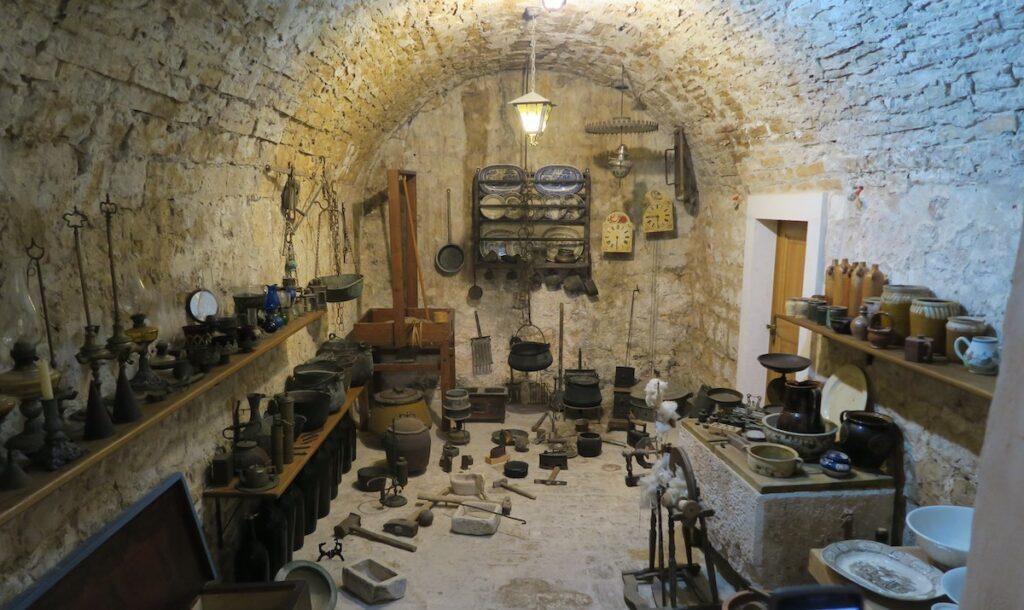
The Benedictine Convent in Hvar and Museum Hanibal Lucić
The Benedictine Convent in Hvar Town is located in the palace of Renaissance poet Hanibal Lucić. The oldest part of the palace still preserves the original wall, cobbled pavement and pieces of stone inventory.
In 1986, a museum that bears the poet’s name was founded on the premises. It hosts most valuable works of art, outstanding paintings dating back to the period from the 16th century, a collection of liturgical objects, magnificently embroidered liturgical vestments and most beautiful pieces of agave lace made by the nuns.
Agave Lace
Hvar Benedictine convent dates from 1664. that year two nuns of the order came to Hvar from the island of Pag with a task to begin the convent practice in this area. Since 1534 the Commune of Hvar, encouraged by some of its resident donators has pleaded for the establishment of a convent in this region. Apart from them, the most meritable person who finally ended a long lasting delay to start a convent activity, was bishop Milani. Owing to his personal efforts the nuns came to town of Hvar. The convent was located on the property inherited from the well-known local renaissance poet Hanibal Lucić.
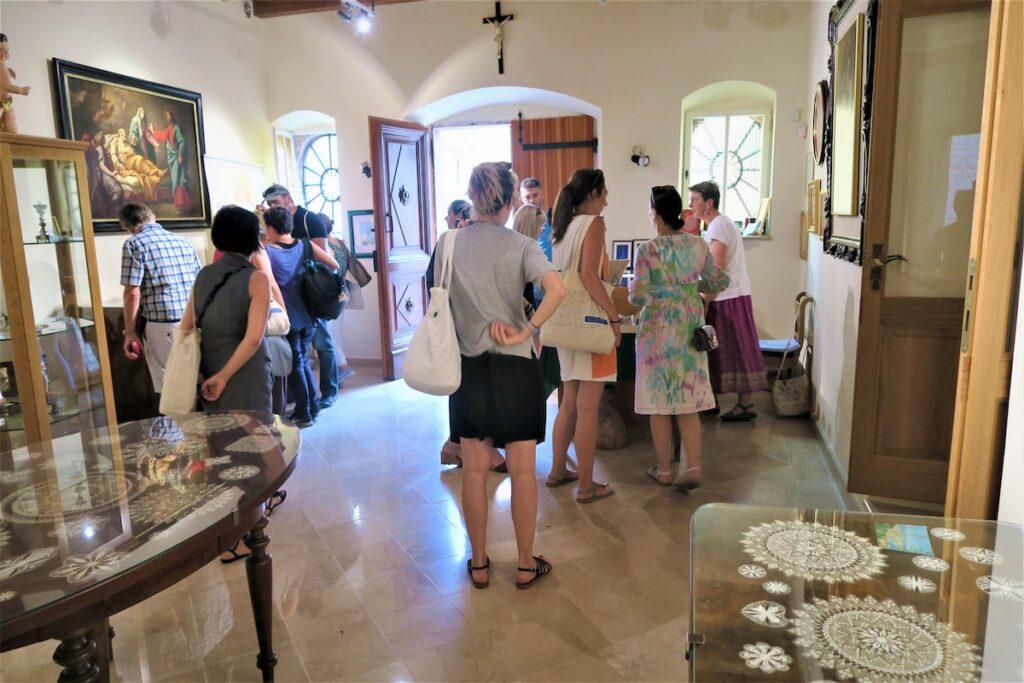
In 1826, Benedictine sisters were officially requested by the Commune of Hvar to set up an elementary female school which functioned until 1886, when the first government school was opened. The former specially nourished teaching various skills of handwork coached by nuns, today evident from the exhibits displayed at the Convent Art collection.
Although their school was closed down, the Benedictine sisters continued giving private lessons reaching girls and women necessary skills required for lace making.
Along with spiritual character being its major task carried out for many centuries of its existence in this area, the convent has become globally known due to the agave lace. As tradition has it, the skill of lace making has been passed from generation to generation within the convent for 100 – 130 years.
It is rather hard work to get the agave threads ready for sewing. Agave threads are carefully drawn from green agave leaves. A specific procedure is then used to improve threads available for lace making.
There are three different methods of lace making regarding technique employed:
- TENERIFE LACE made with small sewing needle on a cardboard.
- TENERIFE ROUND NET LACE a small sewing needle is used along with a metal needle to form a web. Tenerife lace continues with round netting.
- NETTING WITH A METAL NEEDLE ON A STRETCHED NET lace is embroidered with a small needle by sewing various stitched.
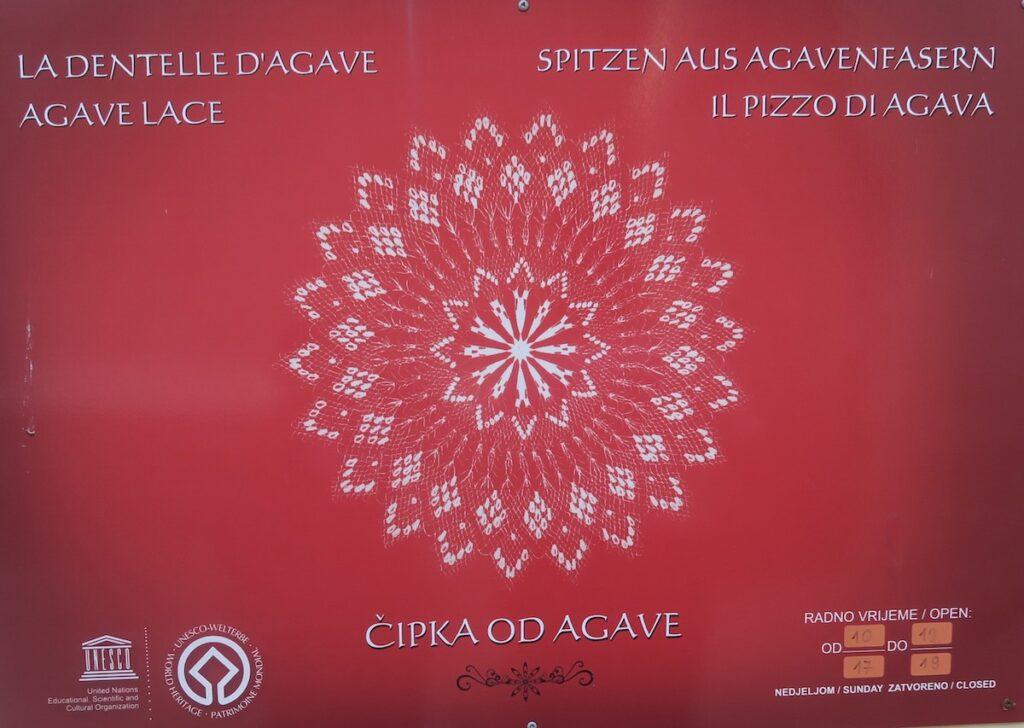
This kind of lace is not made according to already settled designs. Benedictine sisters imagine patterns themselves, thus every one of them creates a unique piece of art. Each single motif is precisely created in the mind before it is skilfully and with much patience embroidered on a ready ground. There are several pieces of lace dating from the end of 19th century, preserved in the convent Art collection. Agave lace should neither be washed nor ironed. It lasts long under a glass surface. Pieces of lace are also framed.
Agave
Agave is the species of tropical amarilidas (lilies) with fat leaves that have thorns along the edges and a spike at the tip. It flowers once in a hundred years with a giant flower stern of about 3 meters containing clusters of fragrant white flowers. After flowering the plant withers and dies. From the fibers contained in the leaves the Benedictine nuns in Hvar make unique needle works famous and loved for their delicate nature.
Agave lace made by benedictine nuns from Hvar has been put on the UNESCO list of nonmaterial heritage of the mankind, on the International Comity for nonmaterial heritage in Abu Dhabi from 28th September 2009.
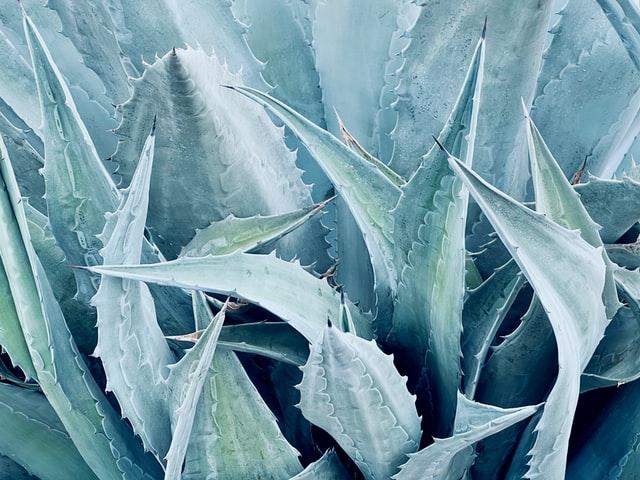

Olive Growing on the Island Brač
Olives have always been the most important growing culture of the Island Brač. The First Dalmatian Oil Cooperative was founded here in 1899 in Povlja, followed by the Oil Cooperative in Pučišća in 1909 and the Oil Cooperative Ložišće in 1927.
It is estimated that there are one million olive trees on the island today, making Brač the largest olive grove in Croatia. Old varieties for oil are mostly grown, among which “Brač” olives – oblica – dominate.
Depending on the year, about 750 wagons of oil are produced annually in the area of the island of Brač in several modern oil mills. The most important processing plants are agricultural cooperatives Selčanka, Postira, Ložišća, oil mills in Sutivan, Pučišća and Milna, Grikula in Pučišća and several private oil mills.
Today there are several tastings of olive oil on the island. Owned by the family farm Cukrov, there is a unique ethnographic collection “Museum uja,” which provides insight into the traditional way of processing olives.
In Mirca, the so-called homeland of olive growing, the hiking trail Maslinovi puti was designed about the tradition of production and values of olive oil. Also, there is the Association of Olive Growers Zlato Brača from Sutivan and the Association of Organic Olive Growers Brač from Selce.

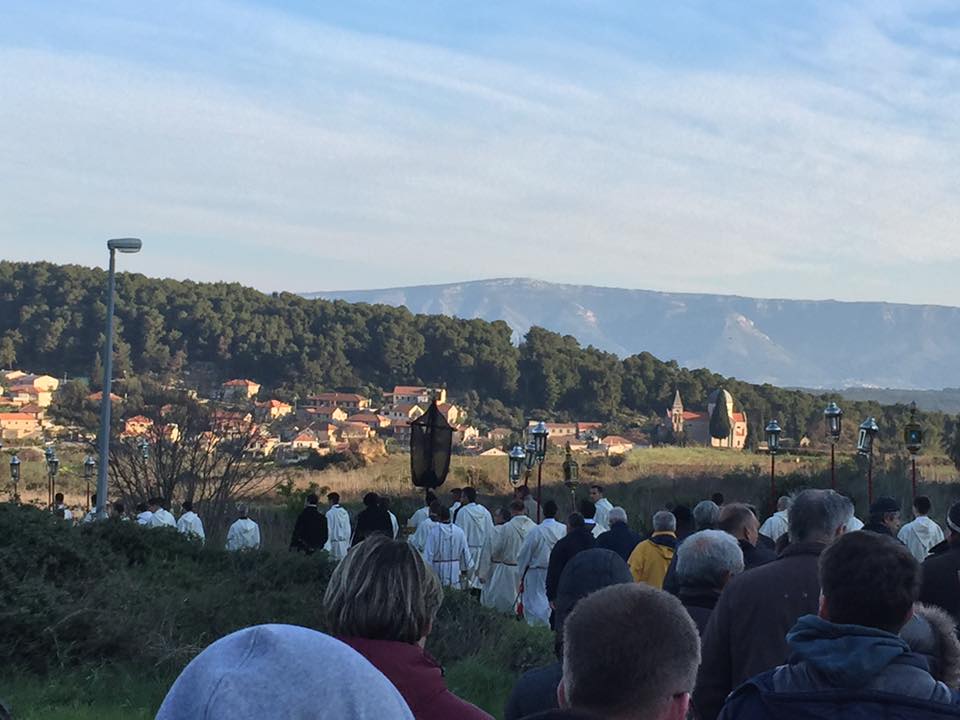
The Holiest Night On The Island Of Hvar
There is nothing so strongly, deeply, and intimately inscribed in the very core of the inhabitants of the island of Hvar and in the deepest point of our identity as Holy Week, especially the procession called “Za križen” (Following the Cross).
Actually, there are six separate processions that visit the six villages in the inland of the island – Jelsa, Pitve, Vrisnik, Svirče, Vrbanj and Vrboska.
